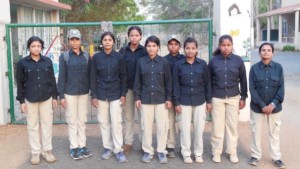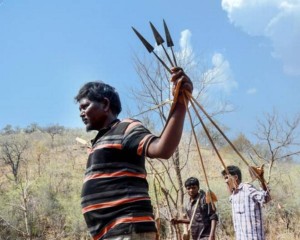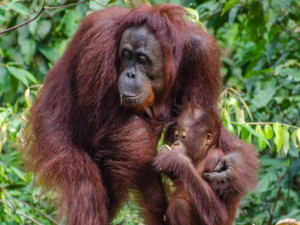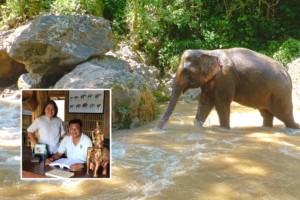Would Gorkhaland tourism be better for the Gorkhas?
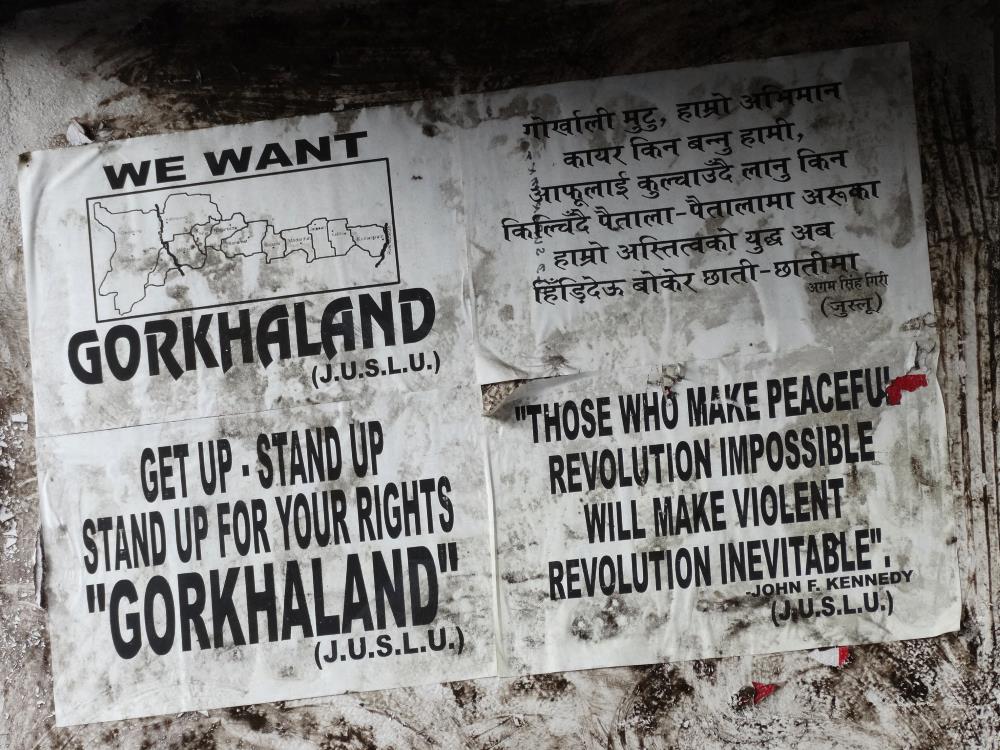
The Gorkhas — Nepali-speaking Indian citizens — are demanding that the Darjeeling Hills and the Dooars (D&D) of West Bengal state split away to form a separate state called Gorkhaland. However, according to Mazumdar, the linguistically and culturally distinct Bengalis who share West Bengal state with the Gorkhas reckon Gorkhaland would be “wholly dependent on the union government for all its needs”.
“But this narrative, being espoused by Bengalis who want Bengal to retain its tenuous and unethical hold over the Darjeeling Hills and Dooars, is totally false,” writes Mazumdar. “Fact is, the proposed Gorkhaland state comprising the Darjeeling Hills and large parts of the Dooars […] can be a revenue-surplus state unlike the debt-laden West Bengal. The proposed state has tremendous potential in emerging as a high earner among all the states of the country.”
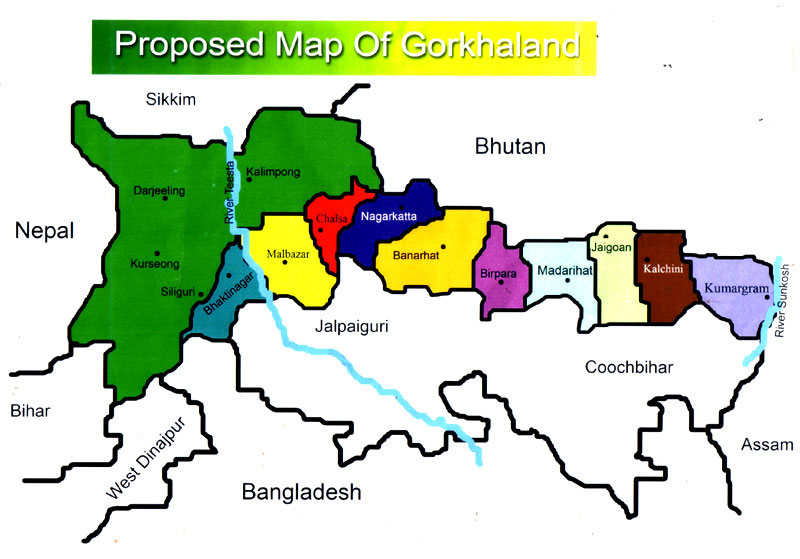
The proposed Gorkhaland state of India: The capital would be Darjeeling in the Darjeeling Hills (green territory) to the west; the Dooars (10 districts on this map) strung out along the floodplains to the east open multiple doors to Bhutan. ‘Dooars’ means ‘doors’ in the Assamese, Bengali, Maithili, Bhojpuri, Magahi and Telugu languages (Wikipedia).
Mazumdar argues that Gorkhaland would have four ‘Ts’ — tea, tourism, and timber (the traditional three ‘Ts’) plus trade — as well hydroelectric energy to power it all along. D&D,“being one of the prime 25 biodiversity hotspots in the world and with its wealth of flora and fauna”, has the potential to earn plenty from ecotourism. And since the proposed Gorkhaland state would have borders with China (through Sikkim), Bangladesh, Bhutan and Nepal, cross-border trade could be huge. Furthermore, the region has untapped potential to generate hydroelectric energy.
Apart from the cultural and linguistic differences between Gorkhas and Bengalis, Mazumdar reckons the demand for a separate state has been fuelled by the “criminal neglect of D&D” by successive Bengali governments: “Not only is physical infrastructure in a mess in the region, little has been invested in healthcare, education, sanitation, livelihood projects, developing tourism, agriculture, floriculture and horticulture.” Even the “toy train”, the Darjeeling Himalayan Railway, which was UNESCO World Heritage-listed in 1999 “wallows in utter neglect”, he reckons.
D&D: West Bengal or Gorkhaland tourism?
D&D gets around 500,000 domestic tourists and 50,000 foreign tourists every year, according to Mazumdar. “Unfortunately, due to poor infrastructure, most of these are low-budget tourists who do not contribute much to the local economy. Almost all the budget hotels in the region are operated on lease by Bengalis from the rest of the state and the locals are only employed as lowly-paid waiters and cooks”.
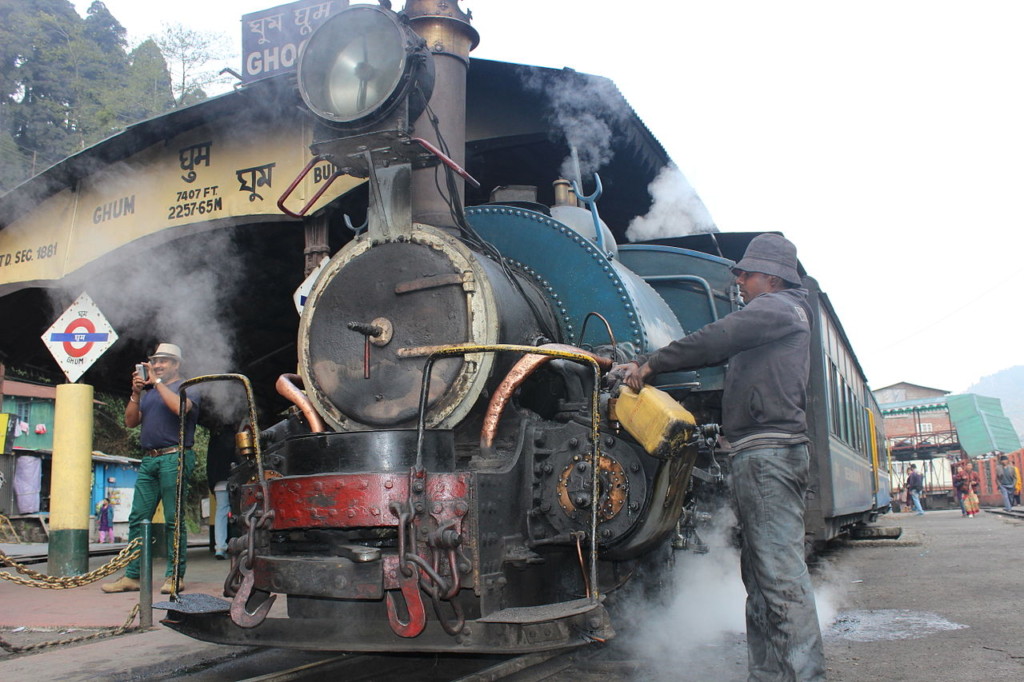
A “toy train” of the Darjeeling Himalayan Railway at Ghoom Station. Source: Pramanick (CC BY-SA 3.0) via Wikipedia
Darjeeling was once a high-end tourist destination and it could attract high-spending international and domestic tourists again, Mazumdar believes. “In stark contrast, the budget tourists who flock to D&D from the rest of Bengal and other parts of the country, as well as the backpackers from abroad, stay in budget hotels run by Bengalis, spend little on food and sight-seeing and nothing much on shopping. So the locals don’t benefit from the budget tourists.”
Mazumdar writes of a Bengali conspiracy to convert D&D into a budget destination. He quotes Binita Rai, a Darjeeling hotelier: “It was done to satisfy the travel urges of the lower middle class and middle class Bengalis who were the supporters of the Left (which ruled the state for 34 years) and now the Trinamool. Making Darjeeling a low-end travel destination was a deliberate ploy to appease the overwhelming majority of Bengalis of Bengal who are low-budget tourists.
“Many amenities aimed at the high-end tourists could have been developed, like golf courses, adventure sports and tea tourism. But while Darjeeling’s infrastructure was allowed to rot away, hotels catering to the backpackers and low-end tourists were encouraged to come up.”
![Would Gorkhaland tourism be better for the Gorkhas? 5 Leopard at Dooars, Kahyerbari Tiger Reserve Center. By Shamitaksha (Own work) [CC BY-SA 4.0 (http://creativecommons.org/licenses/by-sa/4.0)], via Wikimedia Commons](https://goodtourismblog.com/wp-content/uploads/2017/06/Leopard_Khayerbari_Dooars-1024x620.jpg)
Leopard at Dooars, Kahyerbari Tiger Reserve Center. By Shamitaksha (Own work) [CC BY-SA 4.0 (http://creativecommons.org/licenses/by-sa/4.0)], via Wikimedia Commons
“With Gorkhaland, the earnings from this sector will not only increase, it is the people of the Darjeeling Hills and the Dooars who will benefit,” Lama said.
Source: This post is based on a summary of the tourism content in Jaideep Mazumdar’s full article. Please visit Swarajya to read the full article in which Mazumdar investigates the other Ts of D&D — tea, timber, and trade — as well as the region’s natural assets (flora & fauna) and hydroelectric potential. Featured image: Pro-Gorkhaland independence posters, Darjeeling, West Bengal, India. By Adam Jones via Flickr.
Related posts


